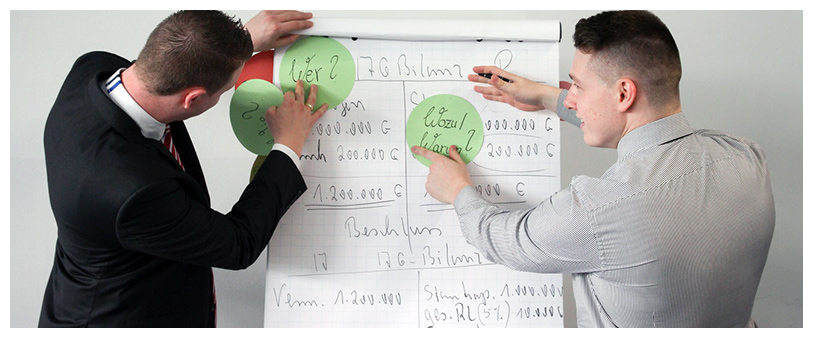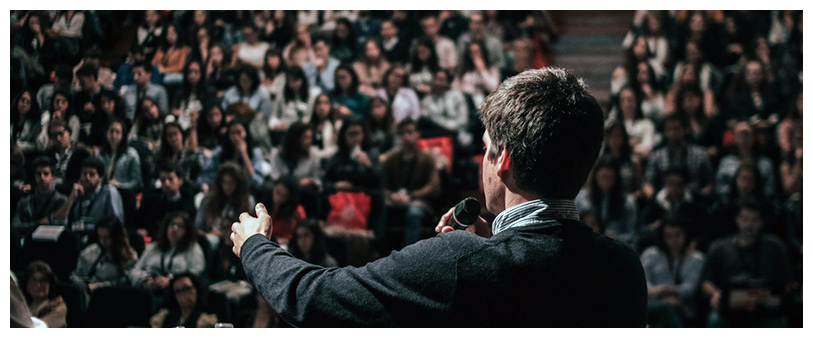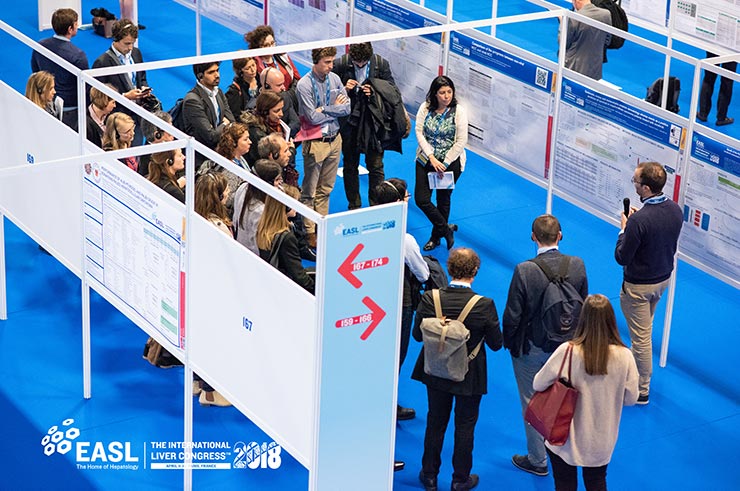In this post, we are going to talk about what is a poster presentation and the 10 basic rules we must follow to make a good poster presentation.
What is a poster presentation?
A poster presentation is something that helps you advertise any project you want to. It combines text and graphics to present the project in a different way. It is visually interesting and accessible. A poster presentation allows you to display your work to a large group of scholars, so you can talk about it and receive feedback from all the interested viewers.
10 rules for a good poster presentation
Down below, we are going to list and talk about the 10 most important rules we must follow to make a good poster presentation.
Rule 1: Define the Purpose of your Poster Presentation
The purpose of a poster presentation will vary depending on the work. Every project has a different status, nature or intent. Some posters designs are intended to be used once and again. For instance, those posters which make that the audience of a conference is aware of a shared resource. Other scientific posters will be probably used just once at a conference and then they will be relegated to a wall in a laboratory.
Before you start preparing your poster presentation, ask yourself these questions: What do you want people to do when they look at your poster? Engaging in a debate about its content? Learning about the topic and encourage them to go and try to do something similar by themselves? Do you want them to collaborate? All the above? None of the above? Anything else? The poster design and its style should be made according to your needs.
Rule 2: Sell your work in a short time

There will be hundreds or thousands of posters at some conferences so you will need to push for people’s attention. The first impression of your poster is of utmost importance. One of the approaches is to raise your work as addressing a decisive question. Then you will address that question the best you can. Once you have raised the question, which may also be the motivation for the study, the focus of your poster should be on giving an answer to your question clearly and concisely.
Rule 3: The title of your Poster Presentation is important
The title is always a nice way to sell your project. It is probably the only thing that the people at the conference see before they reach your poster. The title of your work should be an invitation for them to come and visit it. The title has the capability to raise a decisive question, define the scope of the study, or hint at a new finding.
There is something extremely important to take into account, and it is that the title should be short and comprehensible to a wide and diverse audience. Your poster title must be like a newspaper headline—short, sharp, and compelling.
Rule 4: Poster acceptance means nothing
Do not take the acceptance of a poster as an endorsement of your work. Conferences need that their attendants are financially solvent. Many of the attendants who are there on grants cannot attend a conference unless they are there presenting their projects. There is a small number of speaking slots compared with the number of attendants. How can we solve the dilemma? Introducing posters— so this way, everyone can present their projects. In other words, your poster has not been endorsed, just accepted. To get the endorsement from your partners, you must do good science and present it well on a good poster.
Rule 5: Many of the rules for writing a good poster apply to posters, too
Identify your public and provide them with the appropriate scope and depth of content. If the conference includes a non-specialist audience, you must cater them properly. Just as the abstract of a paper needs to be a succinct summary of the motivation, and the hypothesis needs to be tested, so does your poster.
Rule 6: Good poster have unique features not pertinent to papers
The amount of material presented in a paper is so much more than what is presented on a poster. A good poster requires you to synthesize the work, without losing the message or the logical flow. Posters need to be viewed from a distance, but you can take many advantages of their presence. Posters can be used to provide supplementary information or used as a distribution medium for copies of associated papers. Posters allow you to be more analytical.
Usually, only the titles or, at best, the abstracts of posters can be considered published, which means widely distributed. Probably, most of them may never be seen again. There is an opportunity to say more than what you would say in the traditional literature, which for all intents and purposes will be part of the immutable record. Take advantage of these unique features.

Rule 7: Layout and formal are critical
As a poster maker, your canvas is a white space. You must guide the passerby’s eyes from one succinct frame to another in a logical way from the beginning to the end. Unlike the literature, which is linear by virtue of one page following another, the reader of a poster is free to wander over the pages as if they are tacked to the poster board in a random order.
You are the poster maker, so guide the reader with arrows, numbering, or whatever else you want that makes sense in getting them to move from one logical step to another. Try to do this guiding in an unusual and eye-catching way. Look for appropriate poster layouts in the posters of others and adopt some of their approaches. Finally, never use less than a size 24-point font, and make sure the main points can be read at eye level.
Rule 8: Content is important, but keep it concise
Everything on the poster should help convey the message. The text must conform to the norms of sound scientific reporting: clarity, the precision of expression, and economy of words. The last one is particularly important for posters because of their inherent space limitations. Use of the first-rate pictorial material to illustrate a poster can sometimes transform what would otherwise be a bewildering mass of complex data into a coherent and convincing story.
One carefully produced chart or graph often says more than hundreds of words. Use graphics for “clear portrayal of complexity”, not to impress (and possibly bewilder) viewers with complex artistry. Allow a figure to be viewed in both a superficial and a detailed way. For instance, a large table might have bolds waths of color indicating relative contributions from different categories, and the smaller text in the table would provide gritty details for those who want them.

Likewise, a graph could provide a bold trend line (with its interpretation clearly and concisely stated) and have many detailed points with error bars. Have a clear and obvious set of conclusions—after the abstract, this is where the passerby’s eyes will wander. Only then will they go to the results, followed by the methods.
Rule 9: Posters should have your personality
A poster is a different channel from a paper, which is conventionally dry and impersonal. You must think of your poster as an extension of your personality. Use it to draw the passerby, to take a closer look or to talk to you. Scientific collaboration often starts for other reasons further than the shared scientific interest, such as a personal interest. A photo of you on the poster not only helps people to find you at the conference but also to illustrate a hobby or an interest that could help to start a conversation.
Rule 10: The impact of a poster presentation happens both during and after the poster session
All the efforts made to get a good poster could be in vain if you do not take care of every detail the day of the presentation. That is really important so that the poster can achieve the maximum impact. This requires the right interaction between the presenter and the audience.
You must work to be engaging and get a crowd. Once a viewer is engaged, the rest of the viewers will be engaged too. Don’t interrupt the visitors, let them read. You need to be ready with the second rule. Work all the audience at once, do not leave visitors waiting for your attention, and remember to make eye contact with people.
Then, make it easy for the attendants to contact you afterward. It is very important that you have copies of relevant papers on hand as well as copies of the poster on standard-sized paper. For more mature work, you must have the poster online and make the URL available as a handout. You also must have your e-mail and other demographics clearly displayed and follow up with people who come to the poster by having a signup sheet.

The visitors are more likely to remember you than the content of your poster. Make yourself easy to remember. As the host of the work presented on the poster, you should be attentive, open, curious, and self-confident, but never arrogant or aggressive.
Leave the visitors time and space — they can “travel” through your poster at their own discretion and pace. If a visitor asks a question, talk simply and openly about the work. This is probably your opportunity to get feedback on the work before it goes to publication. It is better to be tripped up in front of your poster than by a reviewer of the manuscript.
Good posters and their presentations can improve your reputation, both within and outside your working group and institution, and they may also contribute to a certain scientific freedom. Poster prizes count when your partners look at your resume.
We hope that our post about the presentation of a poster has liked you and that it will help you to prepare some good presentations in the future. If you need more information, do not hesitate to contact us. We will be happy to help you at all times.


